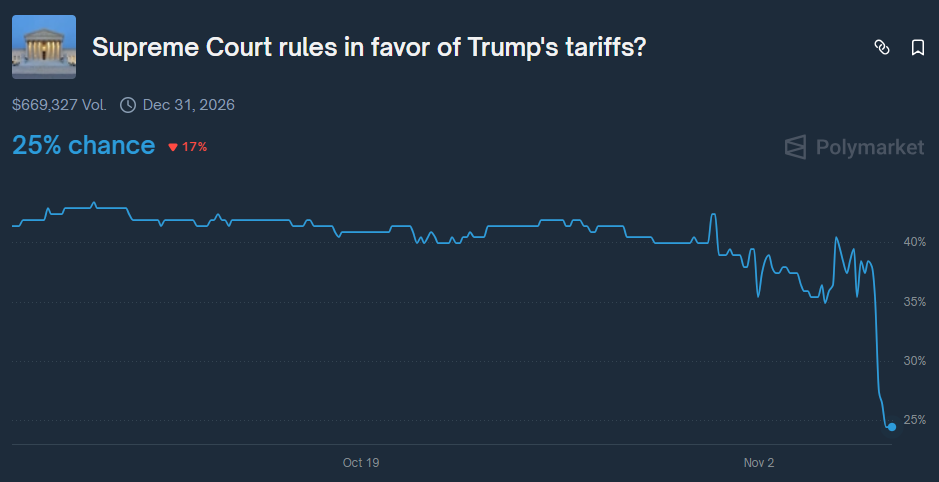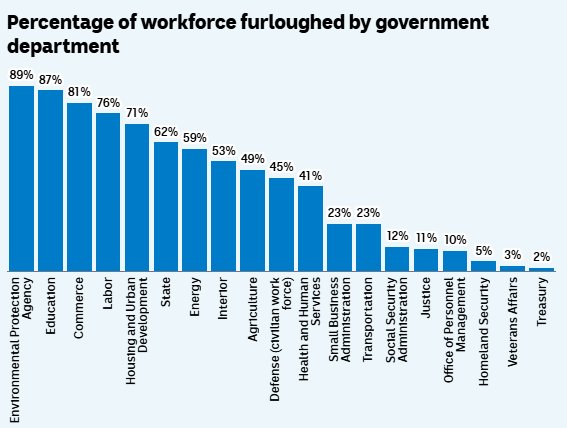Notícias de mercado & insights
Mantenha-se à frente dos mercados com insights de especialistas, notícias e análise técnica para orientar suas decisões de negociação.

Artificial intelligence stocks have begun to waver slightly, experiencing a selloff period in the first week of this month. The Nasdaq has fallen approximately 2%, wiping out around $500 billion in market value from top technology companies.

Palantir Technologies dropped nearly 8% despite beating Wall Street estimates and issuing strong guidance, highlighting growing investor concerns about stretched valuations in the AI sector.
Nvidia shares also fell roughly 4%, while the broader selloff extended to Asian markets, which experienced some of their sharpest declines since April.
Wall Street executives, including Morgan Stanley CEO Ted Pick and Goldman Sachs CEO David Solomon, warned of potential 10-20% drawdowns in equity markets over the coming year.
And Michael Burry, famous for predicting the 2008 housing crisis, recently revealed his $1.1 billion bet against both Nvidia and Palantir, further pushing the narrative that the AI rally may be overextended.
As we near 2026, the sentiment around AI is seemingly starting to shift, with investors beginning to seek evidence of tangible returns on the massive investments flowing into AI, rather than simply betting on future potential.
However, despite the recent turbulence, many are simply characterising this pullback as "healthy" profit-taking rather than a fundamental reassessment of AI's value.
Supreme Court Raises Doubts About Trump’s Tariffs
The US Supreme Court heard arguments overnight on the legality of President Donald Trump's "liberation day" tariffs, with judges from both sides of the political spectrum expressing scepticism about the presidential authority being claimed.
Trump has relied on a 1970s-era emergency law, the International Emergency Economic Powers Act (IEEPA), to impose sweeping tariffs on goods imported into the US.
At the centre of the case are two core questions: whether the IEEPA authorises these sweeping tariffs, and if so, whether Trump’s implementation is constitutional.
Chief Justice John Roberts and Justice Amy Coney Barrett indicated they may be inclined to strike down or curb the majority of the tariffs, while Justice Brett Kavanaugh questioned why no president before Trump had used this authority.
Prediction markets saw the probability of the court upholding the tariffs drop from 40% to 25% after the hearing.

The US government has collected $151 billion from customs duties in the second half of 2025 alone, a nearly 300% increase over the same period in 2024.
Should the court rule against the tariffs, potential refunds could reach approximately $100 billion.
The court has not indicated a date on which it will issue its final ruling, though the Trump administration has requested an expedited decision.
Shutdown Becomes Longest in US History
The US government shutdown entered its 36th day today, officially becoming the longest in history. It surpasses the previous 35-day record set during Trump's first term from December 2018 to January 2019.
The Senate has failed 14 times to advance spending legislation, falling short of the 60-vote supermajority by five votes in the most recent vote.
So far, approximately 670,000 federal employees have been furloughed, and 730,000 are currently working without pay. Over 1.3 million active-duty military personnel and 750,000 National Guard and reserve personnel are also working unpaid.

SNAP food stamp benefits ran out of funding on November 1 — something 42 million Americans rely on weekly. However, the Trump administration has committed to partial payments to subsidise the benefits, though delivery could take several weeks.
Flight disruptions have affected 3.2 million passengers, with staffing shortages hitting more than half of the nation's 30 major airports. Nearly 80% of New York's air traffic controllers are absent.
From a market perspective, each week of shutdown reduces GDP by approximately 0.1%. The Congressional Budget Office estimates the total cost of the shutdown will be between $7 billion and $14 billion, with the higher figure assuming an eight-week duration.
Consumer spending could drop by $30 billion if the eight-week duration is reached, according to White House economists, with potential GDP impacts of up to 2 percentage points total.


The US Dollar Index plummeted on Tuesday, December 13, breaking below a major support following a softer-than-expected inflation report for November. This led to investors scaling back expectations for future Federal Reserve rate increases. Since the initial drop after announcement was released, the price of the Dollar Index has recovered almost 80%.
Although this could simply be the pullback phase of a longer-term downtrend. A downtrend is an overall decrease in price, created by lower lows and lower highs which can clearly be seen on the daily time frame, marked out in the chart below. This week's CPI reading, combined with the technical analysis of the dollar index, suggests that the USD Index may continue to decline, with the next major support sitting around $102.25.
The dollar index is currently retracing and testing a resistance zone between $104.40 and $104.90.


The EUR look to be turning after an impressive run. The pair has risen by 12.57%since it hit the bottom in September. At the time the price fell to 0.9525.
This was the lowest level the EUR had reached since the year 2000. In September, Europe was facing extreme inflationary pressure and conversely the USD was rocketing towards record high levels. However, since this time the price recovered and now near the 50-week moving average.
After this great rebound it does seem as if the price is overextended and in need of a rest. As it can be seen on the weekly chart the candlesticks are showing an exhausted reverse hammer candlestick. It is categorised by a long wick and small body that has closed very near its open price.
The price is also struggling to break above the resistance level at 1.07 which doubles as the 50-week moving average. The failure to break above would likely confirm that the price is still very much trending down. This also opens a potential trading opportunity to go short.
With the price at resistance and potentially good risk reward till the next support all that is needed is a trigger for an entry. Looking at the daily chart for some ideas for an entry is useful. Here the price is currently in an upward channel.
If this channel were to breakdown, then it may indicate a breakdown of the price and an entry for the longer-term short trade. In addition, the RSI is still holding an upward trending pattern. Although it may also offer some confirmation of a break down.
The RSI is relatively overbought and if it breaks down from the trend may signal a reversal. With the Christmas holidays almost here, the volatility and liquidity may be a little lower but moving into 2023 may provide some good conditions for this trade to eventuate.


Gold rises to 6 months high as USD weakens The price of gold has risen as softer inflationary figures pushed the USD lower. The month/month CPI grew just 0.1% vs 0.3% expected, whilst the year/year figure grew by 7.1% vs 7.3% expected. Core CPI month/month rose by 0.2% vs 0.3%.
These figures sent the USD down, which provided a boost to most commodities including Gold with the market becoming more positive about a potential pivot from the Federal Reserve. With the FOMC meeting still to come later this week, and an expected 50 bps increase in the funds rate. However, anything lower or if the Fed releases a particular dovish announcement will further weaken the USD and potentially strengthen the price of Gold.
Technical Analysis The price of gold has broken out of a considerable consolidation. With recessionary pressure now seemingly trumping inflationary pressure, gold may be back in vogue as a transition of capital from riskier investments into gold pushes the price higher. Trading opportunities for gold may come from both long and short positions due to the overall ranging pattern.
Currently, the price has an area of ‘chop’ where the price is neither trending up or down. On the weekly chart, the price is testing the 50-week moving average which is a great measure of the mean of the price or the long-term average. This also coincides with the centre region of the range, which is at approximately USD $1850 per ounce, indicated by the red line on the daily chart.
Looking more closely at the daily chart, the RSI is consolidating and may breakout to the overbought zone before falling back down to a more manageable region. In addition, the 50-day moving average has swung back to in rising position. The global economic outlook still looks gloomy, particularly in relation to the effects or severity of a potential recession.
Therefore, gold may become more attractive to the market as growth continues to slow.


The US software and hardware manufacturer Oracle Corporation (NYSE: ORCL) announced its latest financial results after the market close in the US on Monday. The company posted solid results for the Fiscal 2023 Q2, beating analyst estimates for revenue and earnings per share (EPS). Revenue reported at $12.275 billion vs. $11.959 billion expected.
EPS at $1.21 per share for the quarter vs. the $1.17 per share estimate. "In Q2, Oracle's total revenue grew 25% in constant currency—exceeding the high end of our guidance by more than $200 million," CEO of the company, Safra Catz commented on the performance in the quarter. "That strong overall revenue growth was powered by our infrastructure and applications cloud businesses that grew 59% and 45% respectively, in constant currency. Fusion Cloud ERP grew 28% in constant currency, NetSuite Cloud ERP grew 29% in constant currency—each and every one of our strategic businesses delivered solid revenue growth in the quarter," Catz concluded. "Since the acquisition, Cerner has contributed to Oracle's growth—and Oracle has helped Cerner improve its technology," Chairman and CTO of Oracle, Larry Ellison said in a press release. "But we are just beginning our mission to modernize healthcare information systems. In the wake of the COVID pandemic, there is a worldwide sense of urgency to transform and improve national healthcare systems.
Our goals are ambitious: fully automate clinical trials to shorten the time it takes to deliver lifesaving new drugs to patients, enable doctors to easily access better information leading to better patient outcomes, and provide public health professionals with an early warning system that locates and identifies new pathogens in time to prevent the next pandemic. The scale of this opportunity is unprecedented—and so is the responsibility that goes along with it," Ellison added. The stock was down by around 1% at the market open on Tuesday at $80.27 a share.
Stock performance 1 month: +2.39% 3 months: +6.61% Year-to-date: -7.04% 1 year: -18.84% Oracle price targets B of A Securities: $95 Cowen & Co.: $96 Stifel: $75 Piper Sandler: $85 Keybanc: $94 Barclays: $81 Deutsche Bank: $120 Jefferies: $75 Berenberg: $72 BMO Capital: $90 Oracle is the 39 th largest company in the world with a market cap of $218.09 billion. You can trade Oracle Corporation (NYSE: ORCL) and many other stocks from the NYSE, NASDAQ, HKEX, ASX, LSE and DE with GO Markets as a Share CFD. Sources: Oracle Corporation, TradingView, MarketWatch, MetaTrader 5, Benzinga, CompaniesMarketCap


Brent oil has been dumping over the last few weeks as country’s have put pressure on Russian oil by imposing a price cap. This has sent the spot price down to its lowest level in 12 months. With important economic data to come in the next few days in including updated Cash rates from Central banks in Europe, the UK, and the USA.
Furthermore, the CI figures from the USA will be released which as well will provide an update as to the extent at which inflation has become controlled or is still yet to peak. Any result that encourages growth whether it be lower interest rates in the future, or some other stimulus may be seen as a positive for the price of oil. Similarly, as China awakens from its Covid 19 slumber the demand for brent may increase lifting the price again.
From a technical perspective over the last few days the price has finally found some support, at least in the short term. On the daily chart, the price is near a long-term support zone and is almost due for e a bounce. The price is sitting on a ledge between $77 and $79 as it consolidates and determines what it will do next.
This is also supported by the RSI which is showing an oversold signal that has shown in the past to be a decent predictor of a bounce in some form. Looking closer at the hourly chart, the price is in a short-term consolidation. This is supported by contracting volume after the initial rise in price.
This may indicate that a breakout is imminent. It would be ideal to wait for a rush of volume and a price increase above the $78.21 before entering and then the initial target is $80.71. The price of oil is still very much influenced by geopolitical and macroeconomic factors and there can be highly volatile.


The primary reason for the drop in price is the economic slowdown that has become prevalent in the global market. As fears of a recession continue to grow, the price of Oil has continued to drop. To make matters worse, the G7 have set a $60 per barrel price cap.
This price cap was created to restrict Russia’s ability generate revenue from its oil exports by making the G7 Oil more competitive. From a fundamental perspective this may push the price lower towards the price cap. On the contrary, Russia has threatened to reduce its supply which would force the price to rise.
The situation remains volatile and subject to geopolitical shifts. From a technical perspective the price of Brent Oil is now at its lowest level for the year and below the levels prior to the Russia and Ukraine war. The price is also now well below the 200 day and 50 day moving averages and is dropping at a fast rate.
The price is currently resting on the $76 support levels with the next point of support at $70. If this level fails, as stated above the logical support is $60 based on the price cap. It is also interesting to note that the price of Brent is at its lowest RSI level since December 2021.
In recent times every time since 2022, it has been this low the price has bounced in the short term. On the weekly chart, the price is very similar although the RSI has more room to go before it hits the oversold level. This indicates that there may be more of a sell off before a bounce occurs.
With global volatility still high and fears of a recession continuing to grow, the price of oil may continue to fall.

